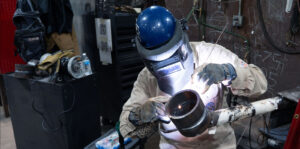Duration:
9.5 months
Campus Availability:
- Tulsa, OK
- Jacksonville, FL
- Houston, TX
- Dallas Metro (Irving), TX
Upcoming Start Dates:
Aug. 11, 2025 & Sep. 15, 2025
START PIPE WELDING TRAINING TODAY
The Welding Specialist with Pipefitting program prepares students to pursue welding career opportunities in the construction, manufacturing, oil and gas, and industrial maintenance fields.
With our experienced instructors by your side, you’ll learn the fundamentals of these important welding styles:
• Structural welding
• Basic and advanced pipefitting
• Thin alloy welding
• Steamfitting
Completing the Pipe Welding training program equips students with not only a diploma, but also the skills necessary to test for welder certification through the American Welding Society (AWS).
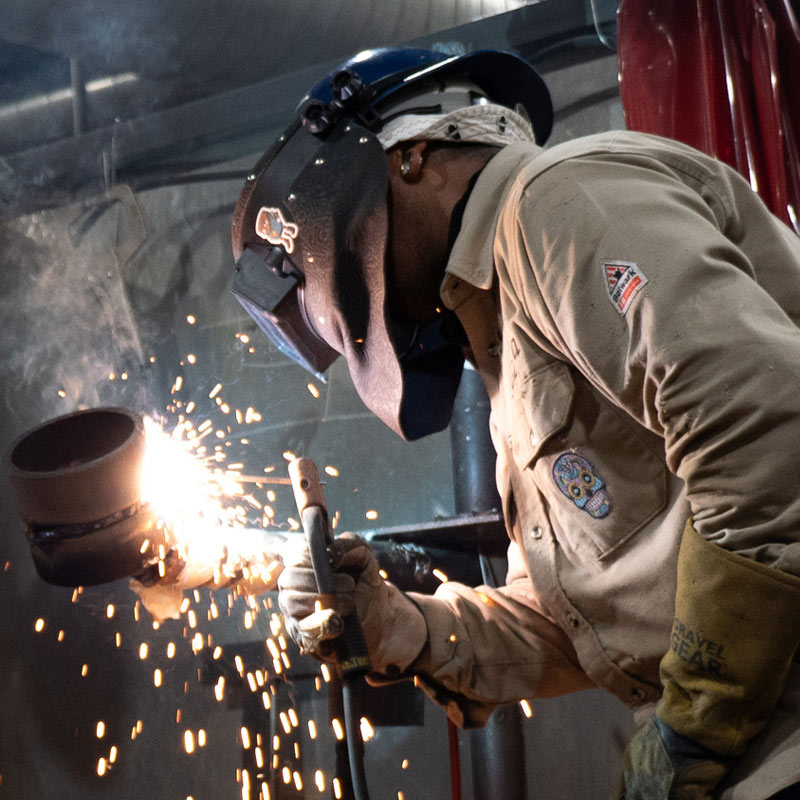
The Welding Specialist with Pipefitting Program can be completed in as little as 9 ½ months. 4 out of 5 days of the week, students will be immersed in hands-on welding training with our instructors, with just one day a week in the classroom.
Need help with a schedule that fits your situation? No problem. Morning, afternoon and evening classes are available.
We offer over 75% hands-on instruction from experienced professionals with only 1 day a week in the classroom, and flexible scheduling with morning, afternoon, and evening classes available.
Featured welding and pipefitting techniques taught:
- SMAW
- MIG
- TIG
- High Frequency TIG
- Fluxcore
Welding & Pipefitting career opportunities:
- Structural welding
- Pipe welding
- Aircraft welding
- Thin Alloy welding
- Pipeline welding
Employment is Expected to Grow for Welding in the US by 45,800 Jobs by 2033!i
Flexible Class Schedules
Morning, Afternoon, Evening and Weekend Classes Available
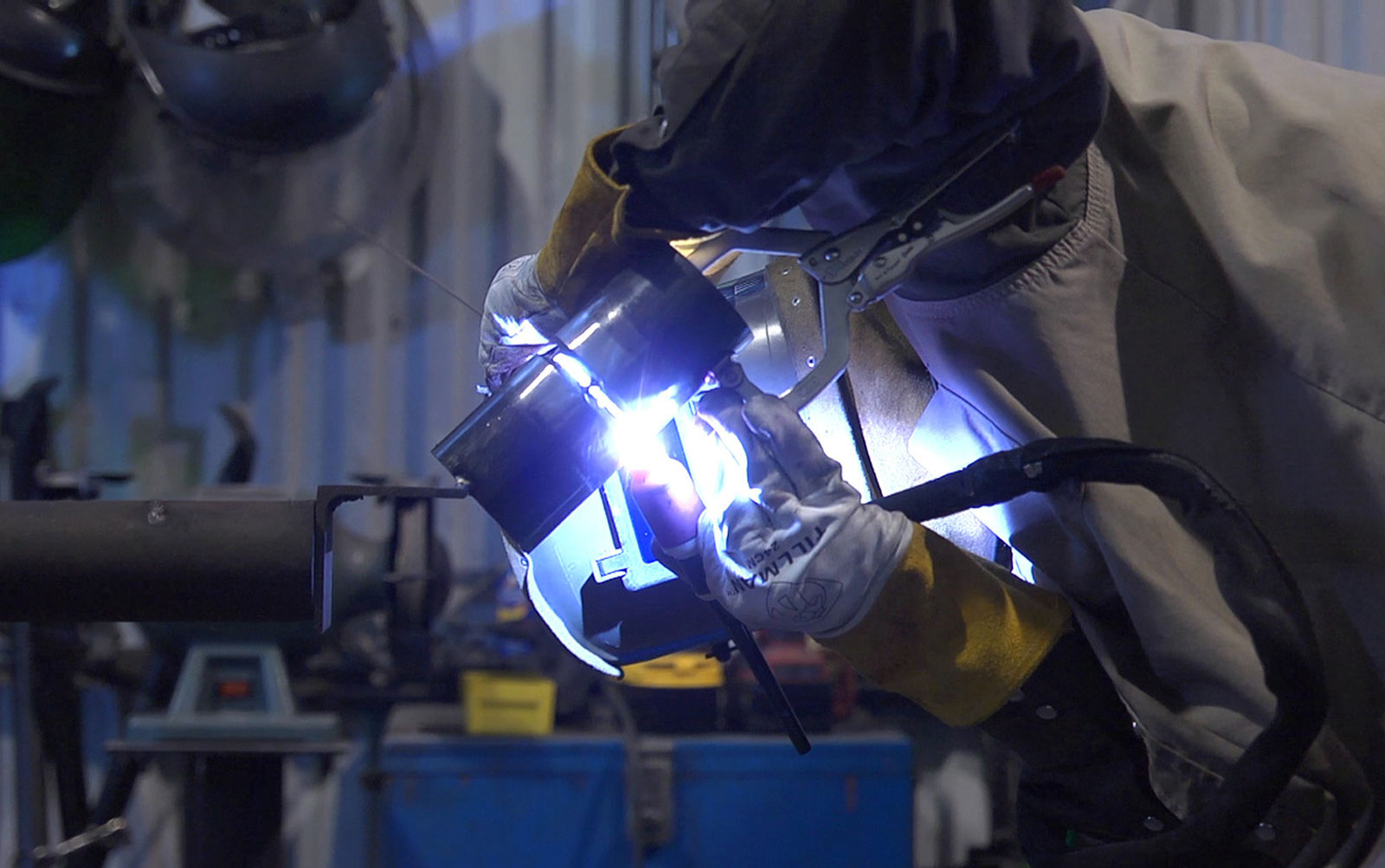
Class schedules range from morning, afternoon and evening, depending on the program and campus location. TWS offers flexible schedules whether you are just graduating from high school, changing your career, or transitioning from military to civilian life. We work hard to find the right program and the right schedule to help you succeed. Contact us for more information on upcoming class times and start dates for the Welding Specialist with Pipefitting program.
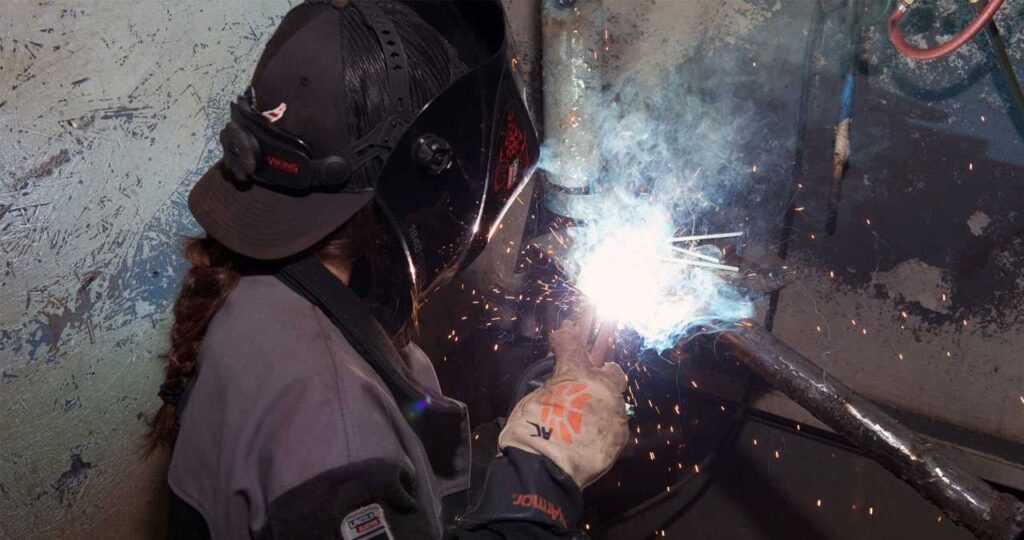
Annual TWS National Welding Competition
Are you a High School senior interesting in learning more about the trades? Tulsa Welding School/The Refrigeration School is hosting our annual High School Welding Competitions early next year to students around the country!
First place winners for each campus get a full tuition scholarship, runner-ups will receive partial scholarships, and ALL participants get $500 towards their tuition if they enroll and TWS/RSI.
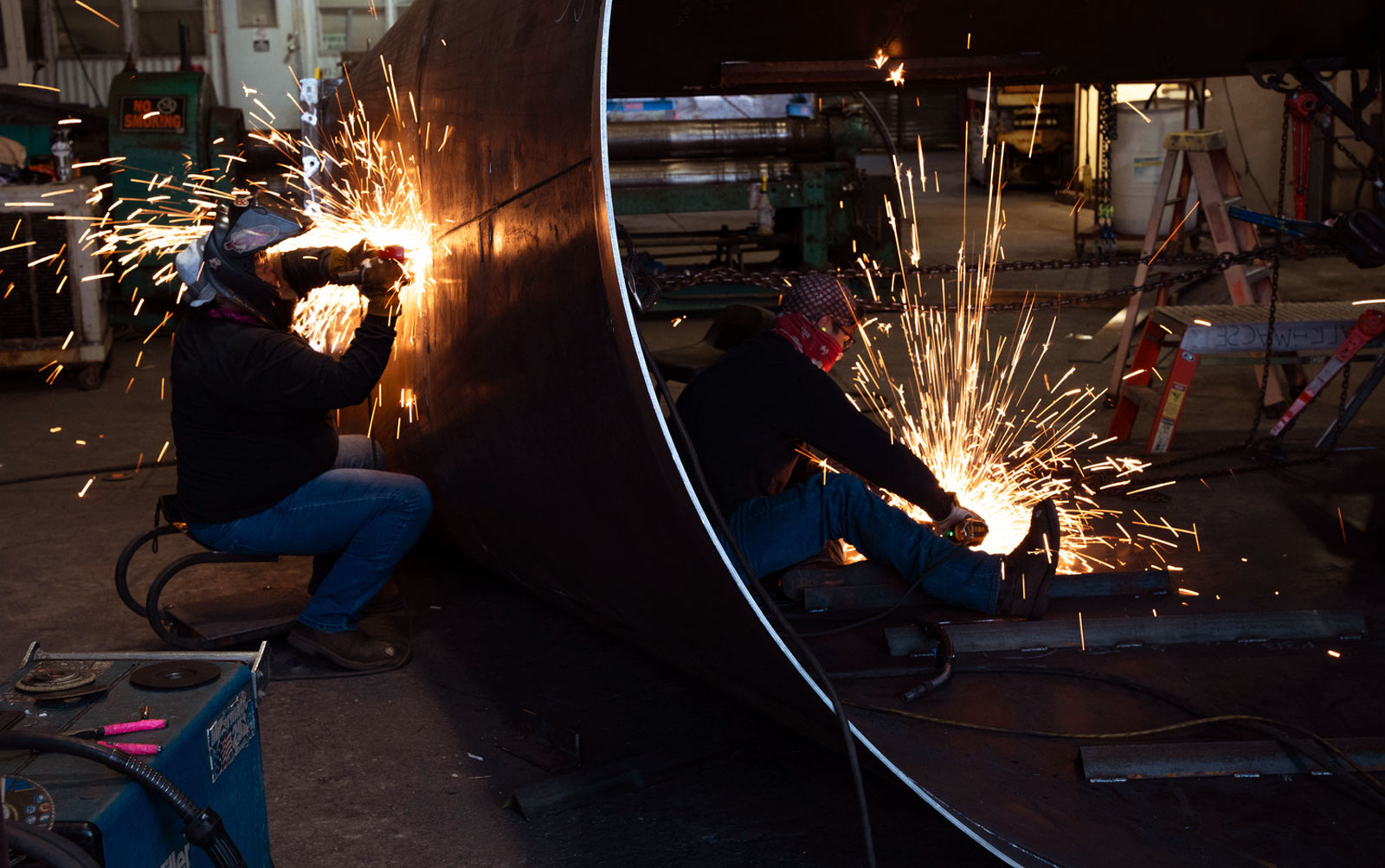
Experiences & Opportunities
Resources for TWS Students
Virtual Tour
Take a virtual tour of our campuses! Explore the classrooms, labs and shop floor with our unique interactive experience.
Employer Relationships
TWS has relationships with major employers across the United States. Our dedicated Career Services team will be there to support you every step of the way after graduation.
The Right Tools for the Job
When you begin your education at TWS, we provide you with an extensive gear package. You get the high quality professional tools you need to succeed. Ask your Admissions Representative for more information about the gear package for your program.
Scholarship Opportunities
Learn more about what scholarship opportunities are available and how you might qualify for one. Start the process of applying for a scholarship today!
Welding and Pipefitting Training Program Class Start Dates
Weekday Schedules (Mon - Fri)
- Morning 7:00am-12:15pm
- Afternoon 12:45pm-6:00pm
- Evening 6:30pm-11:45pm
Weekend Schedule
- Tue/Thu (Classroom) 6:30pm-9:00pm
- Sat/Sun (Lab Days) 8:00am-6:00pm

Ready to Move Forward?
All it takes to move forward is making that first step. Whether you need more information, schedule a tour or want to speak to someone, we’re with you every step of the way.
Are YOU ready to change your life?
Listen to these TWS graduates who changed theirs.
We all come from different walks of life, and different circumstances, but it’s the hard work we do and the blood sweat and tears put in to make us who we are today.
Tulsa Welding School gave these graduates the structure, confidence, and guidance they needed to make a difference in their lives. It only takes one decision to start the journey on a path towards a better career. A better Life.
Hear the stories of these TWS graduates and how they changed their lives:
Jonathan Garza
Coming from a place of darkness and addiction, Jonathan made the change he needed to get his life back on track for his family, career, and his stability. Professional Welding Graduate from our Houston campus - Hear his story on how TWS changed his life.
David Mclean
With so many options in front of him and no clear path ahead, David chose to invest in his life and make the decision to enroll at a trade school. TWS gave him the opportunities to be the best version of himself he could be. Professional Welding Graduate from our Jacksonville campus - Hear his story on how TWS changed his life
Cody Hudgens
Not basing his chances on luck, Cody took the opportunity of becoming a welder in his own hands after serving in the United States Marine Corps. TWS gave him the knowledge and skills he needed to take his passion to the next level. Professional Welding Graduate from our Tulsa campus - Hear his story on how TWS changed his life
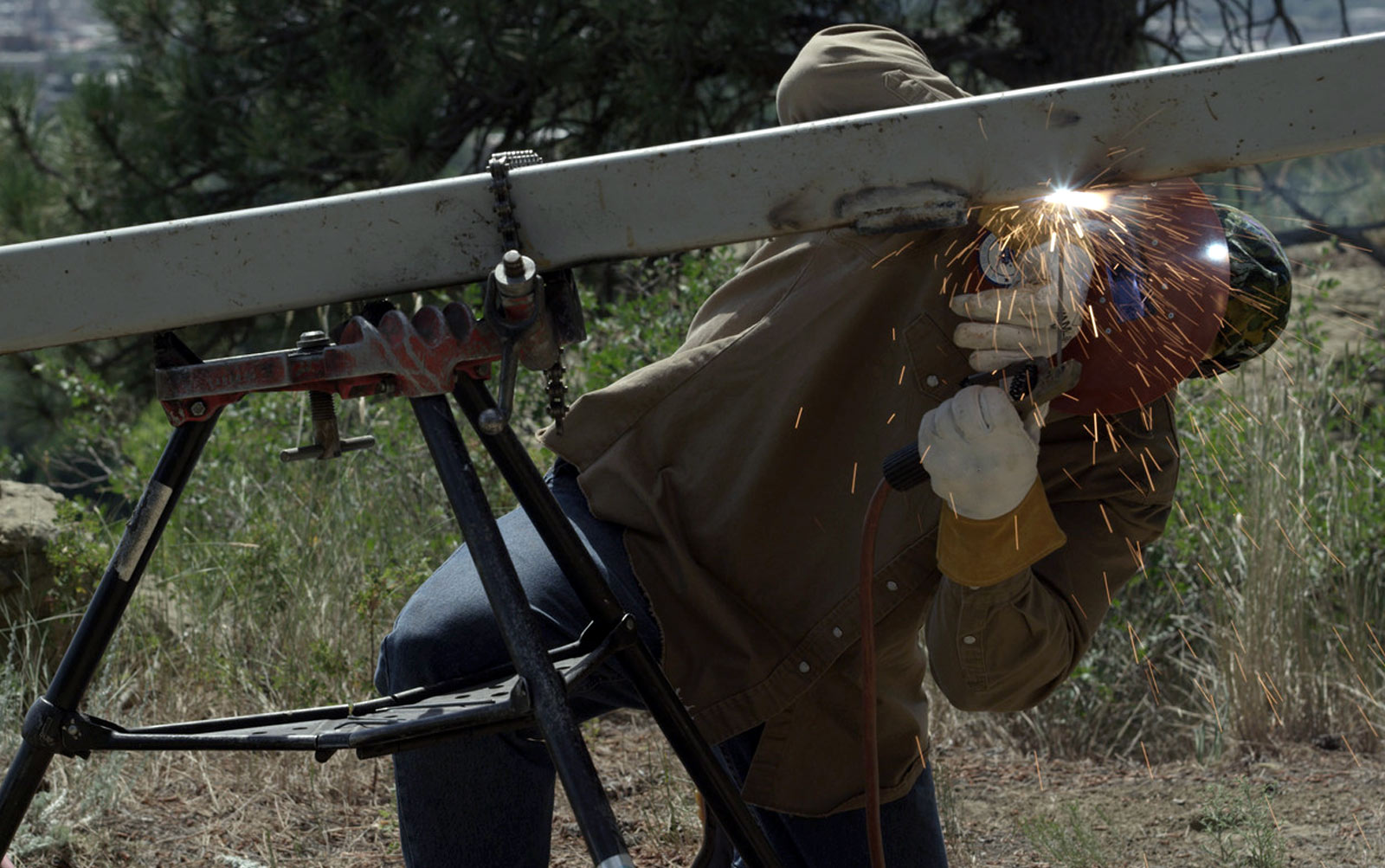
Program Courses for Welding and Pipefitting Training Program
Welding Fundamentals
WLD101
Train in the fundamentals of welding and begin learning the critical skills you’ll need for a welding career.
Learn plasma cutting and carbon arc gouging procedures, arc welding processes, the basic layout of construction drawings and how to correctly read and interpret welding symbols.
Learn how set up welding equipment, the components of an arc welding machine, and the various types of electrodes used in arc welding procedures.
Using an E7018 electrode, students will also practice basic SMAW welding processes and techniques.
Requirements
- 4 Semester Credit Hours
- 25 Lecture Hours
- 100 Lab Hours
- 125 Total Contact Hours
- 2 Outside Prep Hours
GMAW/FCAW Processes
WLD105
In this course, students learn how to set up and operate GMAW/FCAW welding equipment, as well as how to prepare pipe for GMAW/FCAW welding processes.
GMAW, or MIG, uses a torch designed to provide a shielding gas for the weld and an automatic wire feed system that provides a constant feed of the filler metal.
FCAW, or Fluxcore, uses a similar torch but uses a powdered flux to shield the weld.
Students learn about isometric drawings and their importance as a three-dimensional picture of an object.
Requirements
- Prerequisite Course(s): WLD101, PFT105, WLD115, & WLD120
- 4 Semester Credit Hours
- 25 Lecture Hours
- 100 Lab Hours
- 125 Total Contact Hours
- 4 Outside Prep Hours
Structural Welding
WLD110
The Structural Welding course introduces students to a number of different critical things:
- Basic destructive weld testing techniques
- The importance of quality welds to achieve maximum strength and integrity of the metal
- Basic principles of metallurgy
- Welding pipe
Students expand their knowledge about welding diagrams, drawings and the methods of coding various types of metal. Students will also learn the procedures for root pass, fill welds and SMAW processes.
Requirements
- Prerequisite Course(s): WLD101
- 4.5 Semester Credit Hours
- 25 Lecture Hours
- 100 Lab Hours
- 125 Total Contact Hours
- 7 Outside Prep Hours
Pipe Welding
WLD115
This course trains students in the fundamentals of basic pipe welding with two critical welding processes: SMAW and GTAW.
For GTAW welding, students practice with basic root welding on pipe coupons.
In Basic Pipe Welding, students practice uphill and other welding techniques simultaneously. They practice welding in multiple positions as they travel around the pipe to complete the weld.
Requirements
- Prerequisite Course(s): WLD101 & WLD110
- 4 Semester Credit Hours
- 25 Lecture Hours
- 100 Lab Hours
- 125 Total Contact Hours
- 4 Outside Prep Hours
Advanced Pipe Welding
WLD120
Students continue to practice their pipe welding skills, using the GTAW process to weld the root and complete the fill and cap portion of the weld using SMAW processes. Students also learn how to set up and safely operate portable welding units for structural and pipe welding operations, rig and balance pipe loads, use hand signal communication, and lift and place pipe in preparation for welding operations.
Electrical safety guidelines and the steps to prevent electrical shock are also taught.
Requirements
- Prerequisite Course(s): WLD101, WLD110, & WLD115
- 4 Semester Credit Hours
- 25 Lecture Hours
- 100 Lab Hours
- 125 Total Contact Hours
- 4 Outside Prep Hours
Welding Capstone
WLD125
The Welding Capstone course challenges students to apply the skills they learned in previous courses, preparing them to transition from the classroom to the field.
During this course, students learn how to prepare resumes, practice for interviews, learn proper work habits and appearances and complete employment applications.
Requirements
- Prerequisite Course(s): WLD101, WLD105, WLD110, WLD115, & WLD120
- 4.5 Semester Credit Hours
- 25 Lecture Hours
- 100 Lab Hours
- 125 Total Contact Hours
- 7 Outside Prep Hours
Introductory Pipefitting Skills
PFT101
This course introduces essential safety topics and areas such as personal protective equipment (PPE), HazCom, jobsite hazards, and the roles of employees and companies and their obligations to maintain safe work environments.
It discusses mathematics pertinent to the construction industry, the proper use and maintenance of various pipefitting hand and power tools, and gives an overview of blueprints and drawing interpretation.
This course also discusses the basic skills necessary to install, layout and assemble threaded joint piping systems and introduces socket weld piping system lay out and fabrication.
Requirements
- Prerequisite Course(s): WLD101, WLD105, WLD110, WLD115, WLD120, & WLD125
- 5 Semester Credit Hours
- 82.5 Lecture Hours
- 42.5 Lab Hours
- 125 Total Contact Hours
- 10 Outside Prep Hours
Advanced Pipefitting
PFT105
This course continues the discussion of pipe fabrication relative to socket-weld pipe fabrication methods along with the identification, selection and installation of piping support systems.
In addition, this course discusses the layout, installation and fabrication of butt weld pipe and relative flange, bolt and gasket identification and installation.
This course will conclude with a discussion on copper pipe bending and joining processes, along with grooved pipe fabrication and installation.
Requirements
- Prerequisite Course(s): WLD101, WLD105, WLD110, WLD115, WLD120, WLD125, & PFT101
- 4.5 Semester Credit Hours
- 42.5 Lecture Hours
- 82.5 Lab Hours
- 125 Total Contact Hours
- 10 Outside Prep Hours
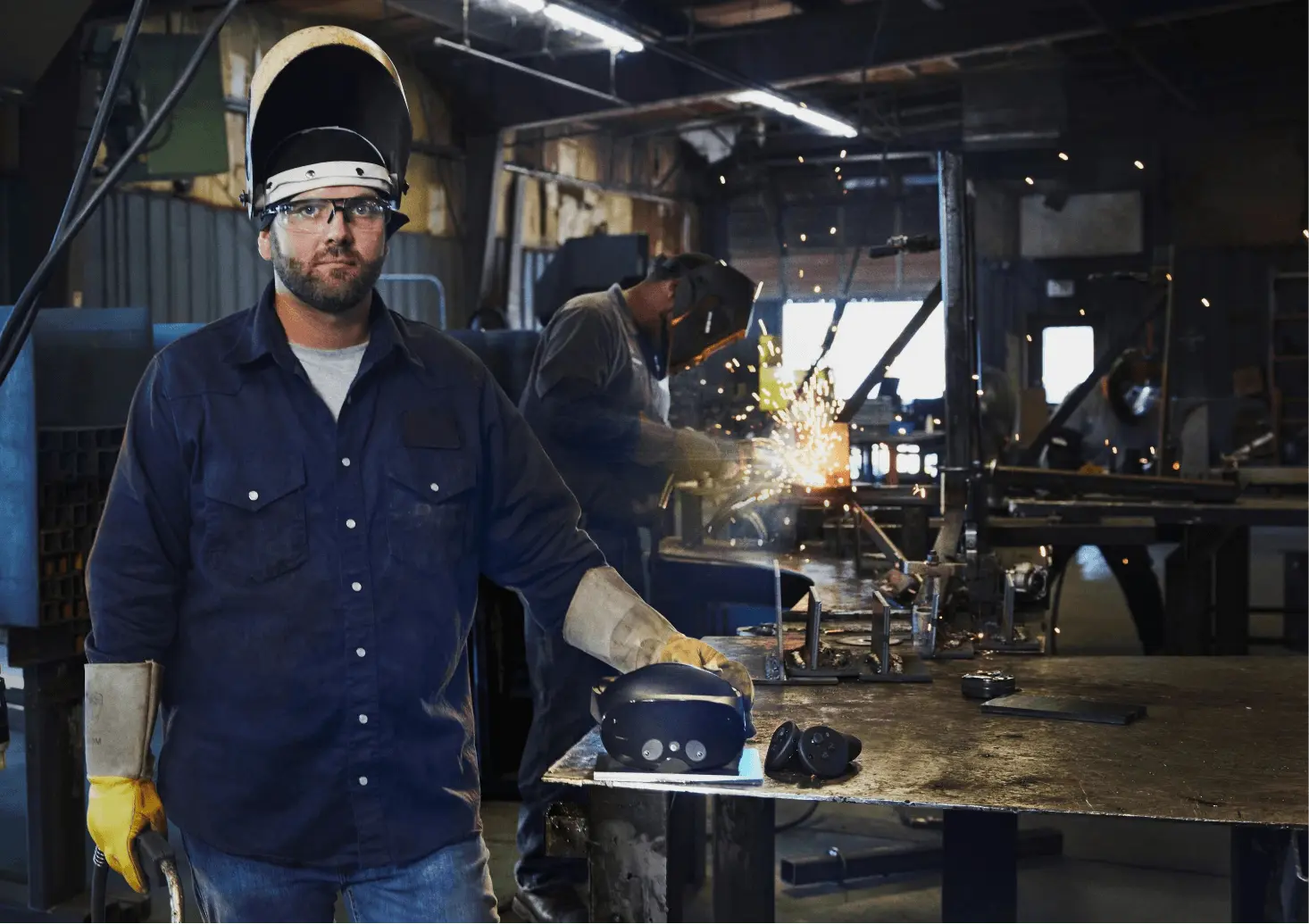

ALL New Welding Students Get an Oculus Quest 2 loaded with OcuWeld Training Software!
TWS is excited to launch OcuWeld utilizing Virtual Reality (VR) to enhance your welding training. OcuWeld is a new and innovative Virtual Reality (VR) welding simulator designed by expert welding instructors for our welding students.
You can access OcuWeld anytime, anywhere – with or without WIFI. It enables you to practice your welding skills as part of our program here at TWS and the Oculus Quest 2 is yours to keep!
Student Reviews
Pecora America
Pipefitting
You put the work in and it will in fact pay off
Had 2 nephews that graduated from here, both are working in the field. I recommend pipefitting too because one of them is making six figures now. Do your actual research on the school, they have 90% job placement and rank as one of the top Welding schools in the US. You put the work in and it will in fact pay off.
Andrew Hill
Professional Welder
An overly positive experience here!
I started TWS (Dallas campus) in March of ’24. I have had, and am still having, an overly positive experience here. I’ve learned a great deal and have been able to excel in every class. So much so, that even though I’m only just over half way through the training here, I’ve already been hired on as a welder with a local crane company at a very nice starting pay! Dillon and Isaac are both outstanding instructors, and having spoken with the instructors I will have in my last two phases, I don’t have any reason to expect any less from them. And Big Will, the director of training, if you ever happen to need one… He will be your hero! (You’ll understand that last comment shortly after you start school here…) I can’t recommend this school highly enough! Absolutely worth the cost of tuition!
Lisa Rodriguez
Professional Welder
As a female entering the trade not knowing anything about welding I can honestly say my experience was amazing.
I just completed my 7 month program at Tulsa and as a female entering the trade not knowing anything about welding I can honestly say my experience was amazing. The instructors were very helpful and not one time did I feel uncomfortable. I have learned so much these past 7 months and I plan to continue learning. I have done schooling before Tulsa trying to be a medical and dental assistant I even looked into sterile processing but I never completed it, it just wasn’t something that I felt happy doing but I am so proud to say I finally found something I learned to love. It wasn’t easy I even had days where I said “I can’t do this” but thanks to the amazing instructors I had they were so patient with me and did everything they could to make sure I got it. Thank you to Mr. Berry, Mr. Trevino, Mr. Buller, Mr. Buster, Mr. Mark and also Mr. Greg for being patient and helping me and the others every way y’all can. Your hard work does not go unnoticed and it is very much appreciated. So thank you again! I would say if you’re thinking of attending for the welding program buy your own grinding cone and also buy more tungstens! Trust me, you’re going to need them because the school only provides one pack. As far as the school I don’t think I experienced anything too bad for me to give Tulsa anything under 5 stars.
Adonis Lenington
